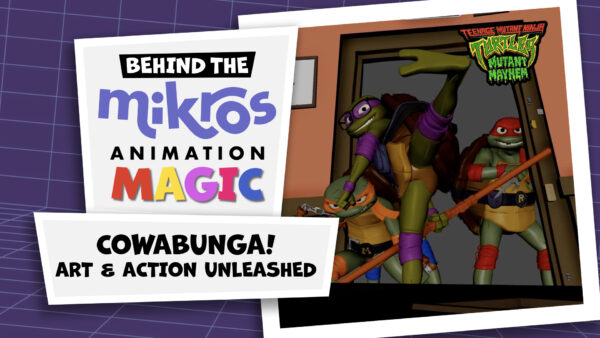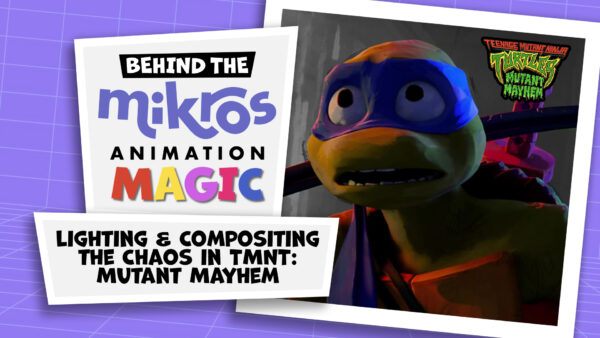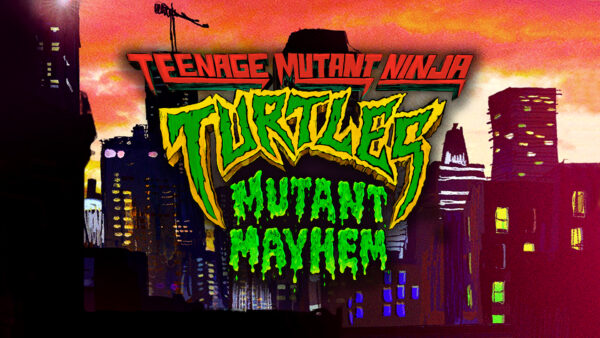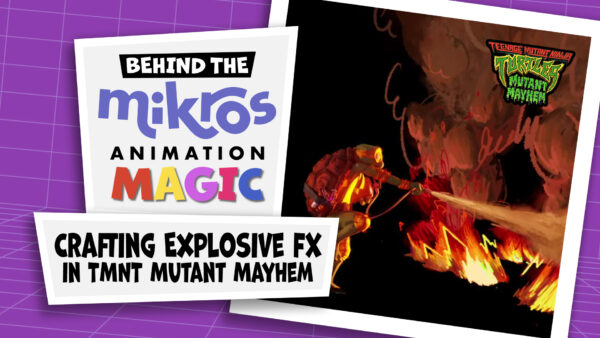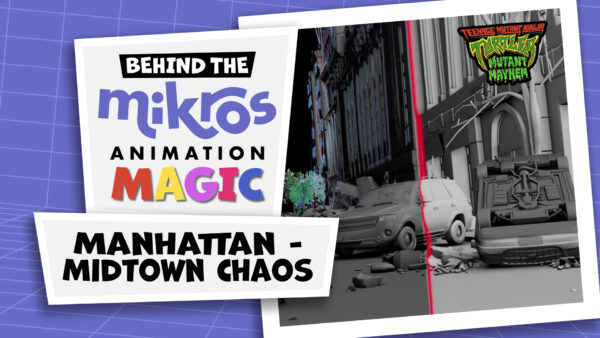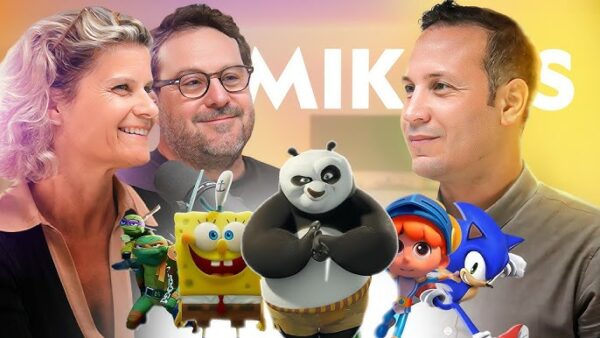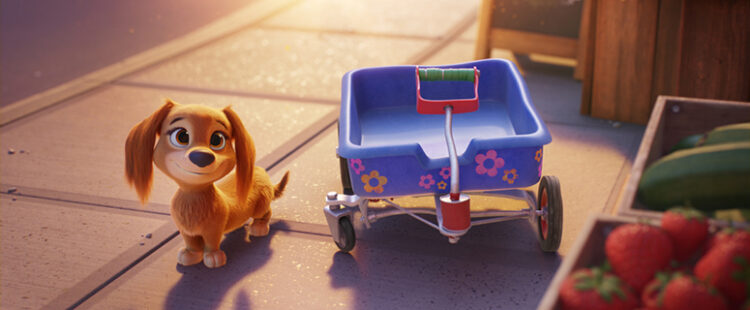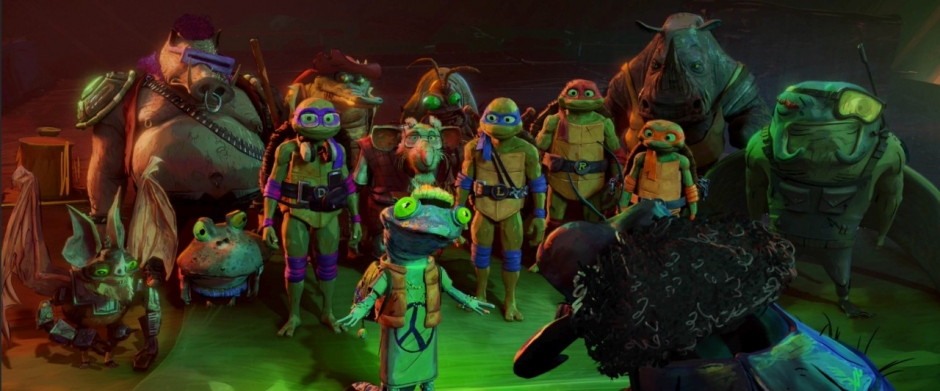
“In a normal day, at least five new film or TV show trailers come across my desk. I handle each the same way – a quick click to view with a sideways glance as I continue whatever work is at hand. For the most part, I have no idea what gem they portray, so fleeting is my attention. But I distinctly remember the day the first trailer for Teenage Mutant Ninja Turtles: Mutant Mayhem hit my inbox. My half-hearted glance ended abruptly; intrigued, I hit pause, restart, and began laughing out loud.” – Dan Sarto
Read the full interview with Dan on the AWN website here.
There’s incredible humor in the physicality of the four brothers, both in the animation and the voice acting ensemble performance. You’d spoken to us previously about your “Movie Club,” where you pulled together film references of teenage physicality to study. Tell us how you dialed in that aspect of the characters in the story, because I know, as you’ve said, it’s central to the very essence of the film.
Jeff Rowe: Yeah, we were really focused on the acting. The animation performance, first and foremost, before any technical accomplishments. We were like, “We just want to focus on acting,” and that means uncommon posing, uncommon expressions, things that capture nuance of emotion and feeling, and just trying to maintain a teenage energy. It meant looking at skater videos, then it was looking at [2011 film] Attack the Block, and then looking at the way teenagers mess with each other, touch each other, and jump up and down. I was at Mikros in Montreal, and we looked at the scene when the turtles are talking to April. We got four animators, went into a room, and blocked it out. We filmed it on iPhones. We just ran the scene a bunch of times like you would with actors, and we figured out this really organic marriage of camera blocking and animation performance where it’s driven by the performance. It really came from these animators embodying these characters.
Talking about the colors, textures, shadows, and some interesting camera action, a 3DCG pipeline doesn’t, by default, push itself towards this type of stylized graphic, almost broken style. That must’ve been difficult to wrangle.
JR: It was also difficult to get the artists to do it at first because their whole job is to make it symmetrical, make it a thing that can be rigged. Anytime they’ve deviated from that over the course of their careers, they’ve been told, “No, you can’t do that.” And then on this project, it’s like, “No, no, no. Yeah, break the rules. Whatever you’ve been told before this, don’t do that.” We were trying to create a different philosophy and approach. And there was a little reticence at first. But once the artists broke the rules a little bit and then got approvals, they were like, “Oh, we can go even further.” And within a short time, Mikros was just running with it, modeling things even more pushed than we could have imagined, and really embracing the design philosophy and breaking what the computer naturally wanted to do. And I think for a lot of artists, it was really freeing and exciting to do something that different.
Thanks Dan and Jeff.
